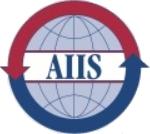Steel Products Prices North America

AIIS: Imports Indicator of Good Economic Health
Written by Sandy Williams
October 28, 2014
The American Institute for International Steel (AISI) says the increase in imports this year is a sign of a healthy economy. Increased imports indicate increased demand and thriving businesses. The press release from AIIS follows:
Falls Church, Va., October 27, 2014 – Steel imports continued their upward trend in September, increasing 5.2 percent over their August level.
The 3.89 million net tons of steel imported in September was 38 percent higher than the September 2013 amount.
Imports from Brazil and China showed the largest month-to-month increases, with the totals from both countries rising more than 43 percent to 451,000 net tons and 327,000 net tons, respectively. Imports from the European Union were up 10.2 percent to 647,000 net tons, Canada 6.7 percent to 530,000 net tons, Russia 15.3 percent to 496,000 net tons, and Mexico 12.6 percent to 367,000 net tons. Imports from South Korea decreased 14 percent to 388,000 net tons.
For the first nine months of the year, imports increased 36 percent over the same period in 2013 to total 32.56 million net tons. The biggest increase has come from Russia, which, notwithstanding the situation in Ukraine, has sent the U.S. 243 percent more steel this year, pushing its total to 3.64 million net tons. Imports from the European Union and South Korea have both increased more than 42 percent to 5.13 million net tons and 4.04 million net tons, respectively. Imports from Canada have expanded 9 percent to 4.55 million net tons, Brazil 16.2 percent to 3.55 million net tons, Mexico 13.7 percent to 2.82 million net tons, and China 69.5 percent to 2.35 million net tons.
Semifinished imports totaled 945,000 net tons in September, 46.7 percent higher than a year earlier. Year-to-date, though, semifinished imports are virtually unchanged from 2013 at 5.22 million net tons.
The increase in imports this year has led to much gnashing of teeth in certain sectors where it is claimed, without evidence, that these purchases from abroad will bring harm to the U.S. economy. Actually, though, the opposite is true. The expansion of imports is a sign of – and contributor to – good economic health. Steel imports are up by more than a third this year because demand is increasing, which means business is thriving. And the ability to buy steel on the global market ensures that companies – and, further down the line, consumers – pay a fair price when it is not inflated by protectionist measures. This frees up funds for more capital investment and consumer spending, continuing the virtuous cycle of economic growth. (Source: AIIS press release)

Sandy Williams
Read more from Sandy WilliamsLatest in Steel Products Prices North America

Nucor slows HRC price climb with $5/ton increase
After eight weeks of double-digit price increases on hot-rolled (HR) coil, Nucor slowed the price rise this week with an increase of $5 per short ton.

Domestic CRC prices surge ahead of imports
The price spread between stateside-produced CR and imports reached its widest margin in over a year.

Evraz raises plate prices $160/ton
Evraz North America (NA) has followed Nucor and SSAB with a plate price increase of its own: up $160 per short ton (st). The increase was effective immediately for all new orders of carbon, high-strength low-alloy, and normalized and quenched-and-tempered plate products, as well as for hot-rolled coil, the steelmaker said in a letter to […]

Nucor lifts HR coil to $820/ton
Nucor has increased its consumer spot price (CSP) for hot-rolled (HR) coil for a fourth consecutive week.

Nucor pushes HR spot price to $790/ton
Nucor increased its consumer spot price (CSP) for hot-rolled (HR) coil to $790 per short ton (st) on Monday, Feb. 10 – a $15/st bump vs. last week. The Charlotte, N.C.-based company has raised its weekly CSP by $40/st over the past three weeks after maintaining tags at $750/st since Nov. 12, according to SMU’s […]
